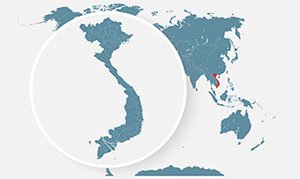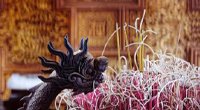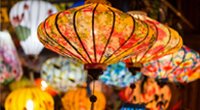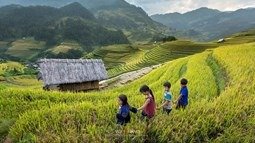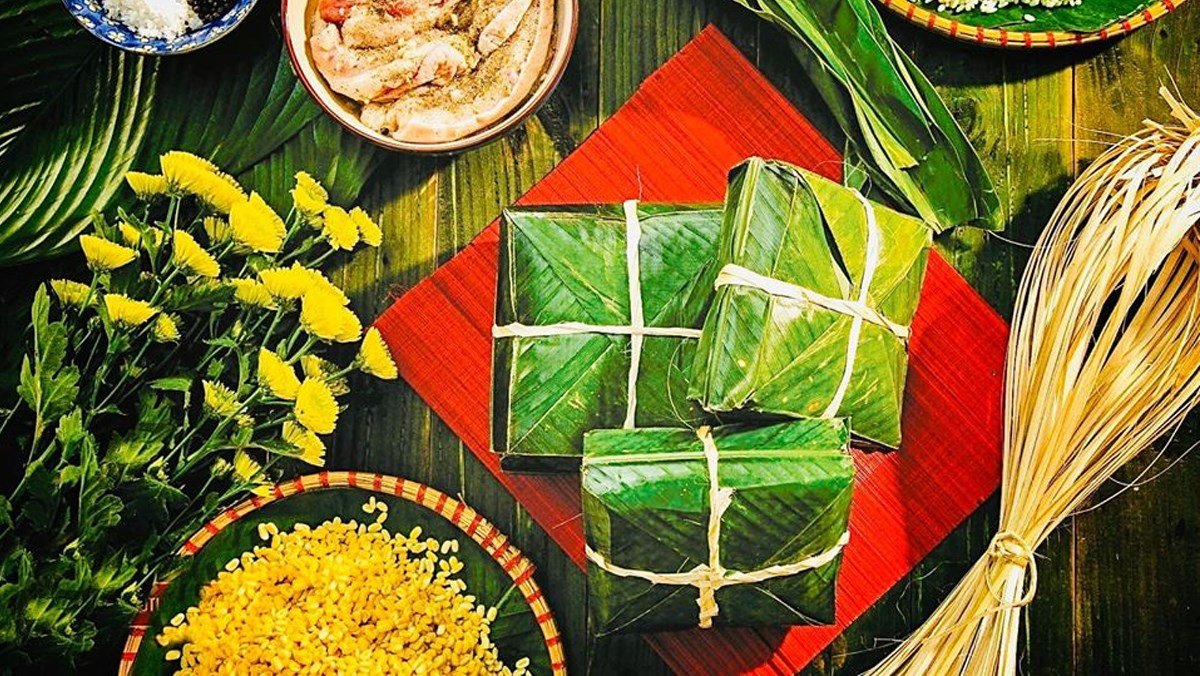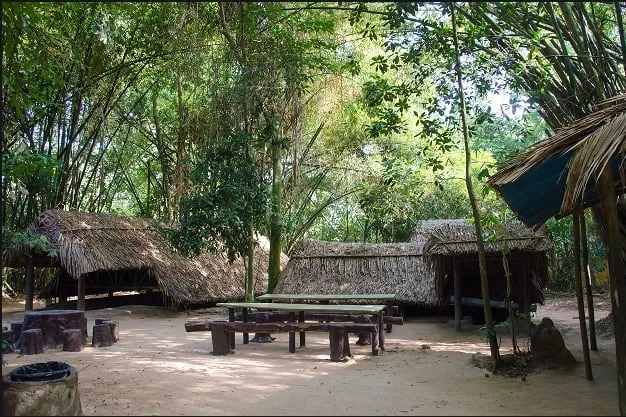Contents
ToggleThe Legend of Bánh Chưng
The origins of bánh chưng, Vietnam’s most iconic New Year’s dish, are rooted in legend dating back more than 2,000 years, during the reign of the sixth Hùng King. After years of turmoil, the kingdom had finally found peace, and the king decided it was time to choose a worthy successor among his sons. Instead of appointing one directly, he announced a challenge: each prince must prepare a food offering that best expressed devotion to their ancestors and represented the prosperity of the land.
While the other princes scoured the mountains, forests, and rivers in search of rare delicacies—wild game, precious spices, or exotic treasures—Prince Lang Liêu, who had grown up in hardship after losing his mother, found himself at a loss. Lacking wealth and servants, he worried he would never match the grandeur of his brothers’ gifts.
One night, a divine figure appeared to him in a dream. The spirit reminded Lang Liêu of a simple truth: nothing was more precious to the Vietnamese people than rice, the grain that sustained life in every village, from the Red River Delta to the remote mountain valleys. Inspired, the prince created two humble cakes, each carrying symbolic meaning:
- Bánh giầy – a round cake, soft and white, symbolizing the sky and the heavens above.
- Bánh chưng – a square cake, wrapped in green leaves, representing the fertile earth below.
When the time came to present the offerings, Lang Liêu’s modest rice cakes stood in sharp contrast to the extravagant displays of his brothers. Yet the king was deeply moved by their simplicity and symbolism. He realized that these cakes embodied the true spirit of gratitude, sustenance, and harmony between heaven and earth. Declaring Lang Liêu’s wisdom greater than wealth, he named him his successor.
From that moment, bánh chưng was no longer just food—it became a sacred cultural tradition, prepared every year for Tết (Lunar New Year) and during the Hùng Kings’ death anniversary to honor both ancestors and the land itself.
Even today, as families gather around steaming pots on New Year’s Eve, the smell of boiling bánh chưng drifting into the night carries the same timeless message: Tết has truly arrived.

What’s Inside Bánh Chưng?
Though simple in appearance, every layer of bánh chưng is filled with symbolism and care. The cake is built from everyday ingredients that together form a picture of abundance and gratitude:
- Sticky rice (nếp): The outer layer of glutinous rice forms the body of the cake, symbolizing the earth that nourishes all life.
- Mung beans: Golden and smooth, the beans represent fertility, growth, and filial piety.
- Pork belly: Chosen for its balance of fat and lean meat, pork signifies prosperity and completeness.
- Pepper and shallots: Subtle but essential, these add warmth, protection, and depth of flavor.
The ingredients are carefully layered, then wrapped in dong leaves (or banana leaves in some regions). The wrapping is tied tightly with bamboo strings, forming a perfect square that represents the land itself. The bundle is then simmered in a large pot for 8 to 12 hours, often through the night, as families gather around the fire to share stories, sing folk songs, and welcome the new year together.
When finally unwrapped, the cake reveals its signature green outer layer, a gift from the leaves, and a fragrant, earthy aroma. Once cooled, bánh chưng is sliced into eight equal portions, each wedge showing the beautiful cross-section of glutinous rice, golden bean paste, and savory pork.
Traditionally, it is enjoyed with pickled onions or vegetables (dưa hành, dưa món), whose sharp, tangy notes cut through the richness of the cake. Whether eaten fresh, lightly pan-fried until crispy, or shared as a gift with neighbors, bánh chưng embodies the spirit of Vietnamese hospitality, memory, and celebration.
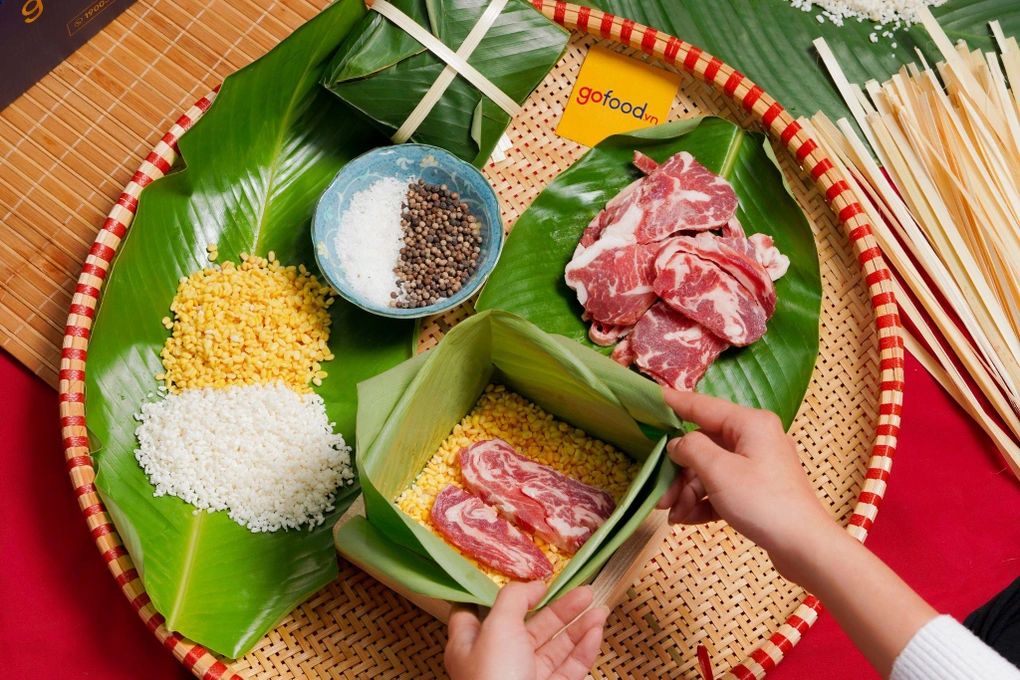
Simple Recipe: How to Make Bánh Chưng
Making bánh chưng is more than just cooking — it is an act of family bonding and tradition. During Tết, relatives of all ages gather around, from grandparents teaching the younger ones how to fold the leaves, to children excitedly tying strings. Although the process is long, it is filled with laughter, storytelling, and the warmth of togetherness.
Here’s a simplified recipe for about six cakes you can try at home:
Ingredients
- 1 kg sticky rice (glutinous rice)
- 400 g mung beans
- 400 g pork belly (balanced fat and lean)
- Salt, pepper, seasoning powder
- Dong leaves (or banana leaves as an alternative)
- Bamboo strings or kitchen twine
Preparation
- Rice: Soak sticky rice overnight in lightly salted water for a chewy yet tender texture.
- Beans: Soak mung beans for 4 hours, peel, steam or cook until soft, and season lightly with salt.
- Leaves: Wash and trim dong or banana leaves, cutting off tough stems.
- Pork: Cut pork belly into thick chunks, marinate with salt, pepper, and seasoning powder for at least 30 minutes.
Wrapping
- Lay down several leaves in a crisscross pattern.
- Add the layers in order: sticky rice → mung beans → marinated pork → mung beans → sticky rice.
- Fold the leaves tightly into a neat square and secure with bamboo strings.
Cooking
- Place cakes upright in a large pot, cover with water, and boil for 8–12 hours. Keep adding hot water as needed so the cakes remain submerged.
- Once cooked, rinse the cakes under cold water, press them under a weight to remove excess liquid, and let them cool before serving.
👉 Pro tip: Bánh chưng can last about one week refrigerated, or up to three months frozen. Reheat by steaming or pan-frying.
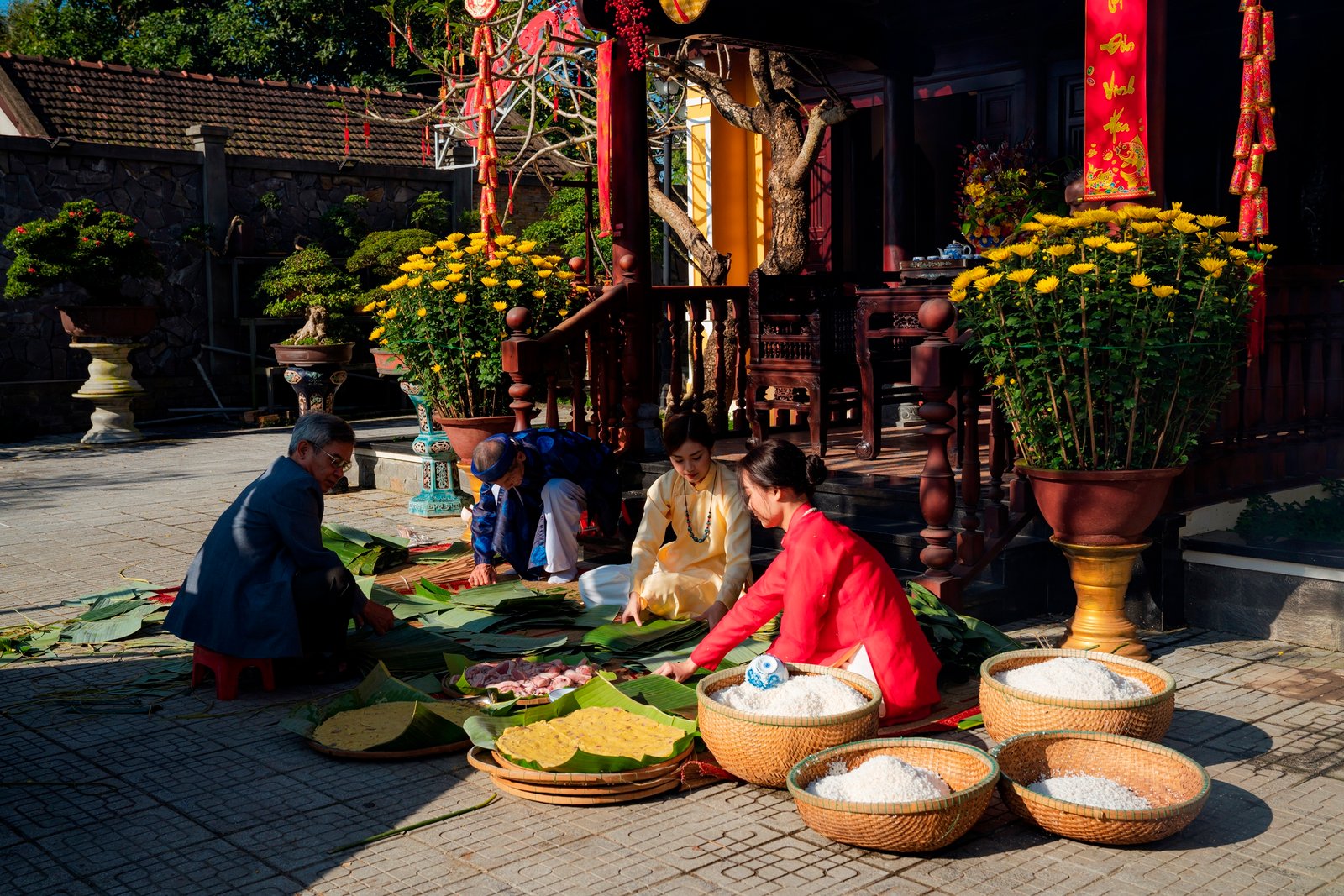
Bánh Chưng and Its Variations
While bánh chưng is the hallmark of Northern Vietnam, its fame spread across the country, inspiring unique regional and ethnic variations. Each carries the same essence of gratitude, but reflects local tastes and traditions:
- Bánh chưng (Northern Vietnam): The classic square cake, representing the earth.
- Bánh tét (Southern Vietnam): A cylindrical version, often with creative fillings such as banana, black beans, or even sweet coconut. It is easier to slice into rounds for sharing.
- Bánh chưng rán: Leftover bánh chưng pan-fried until the rice turns golden and crispy on the outside, while remaining soft and savory inside — a beloved Tết breakfast.
- Vegetarian bánh chưng: Popular in Buddhist or vegetarian households, replacing pork with mung beans, mushrooms, and sometimes peanuts.
- Black bánh chưng (Bánh chưng đen): A specialty of the Tày ethnic group, made with glutinous rice mixed with black ash powder, giving it a striking dark-purple hue.
- Bánh chưng gù: Crafted by the San Diu ethnic community, with a distinctive hump-like shape.
Despite their different forms — square, round, black, vegetarian, or fried — these variations share the same spirit: a symbol of prosperity, family unity, and respect for ancestors.
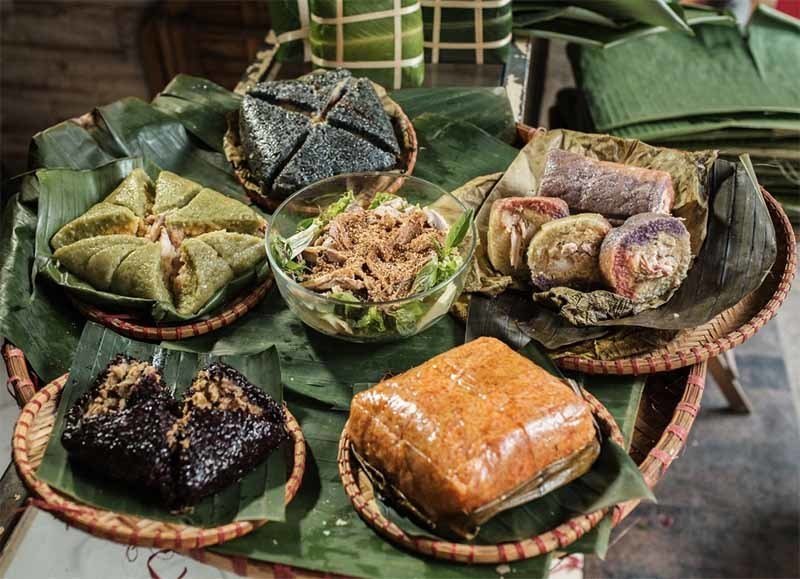
Final Thoughts
Bánh chưng is not just food—it’s history, legend, and family all wrapped in green leaves. Preparing it brings generations together, and eating it connects every Vietnamese to their ancestors.
If you’re lucky enough to be in Vietnam during Tết, you’ll see steaming pots of bánh chưng everywhere. And if you’re abroad, why not try making your own? With the fragrance of sticky rice and pork filling your kitchen, you’ll feel the spirit of Vietnamese New Year no matter where you are.

